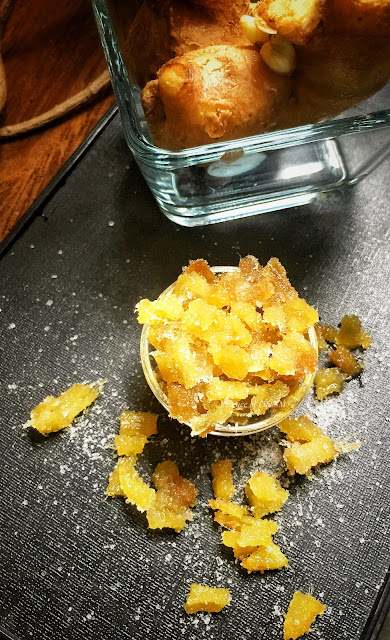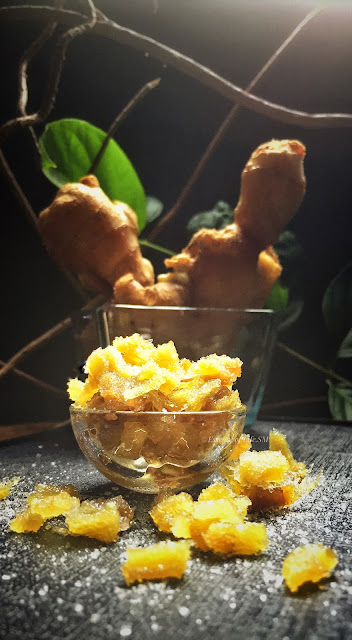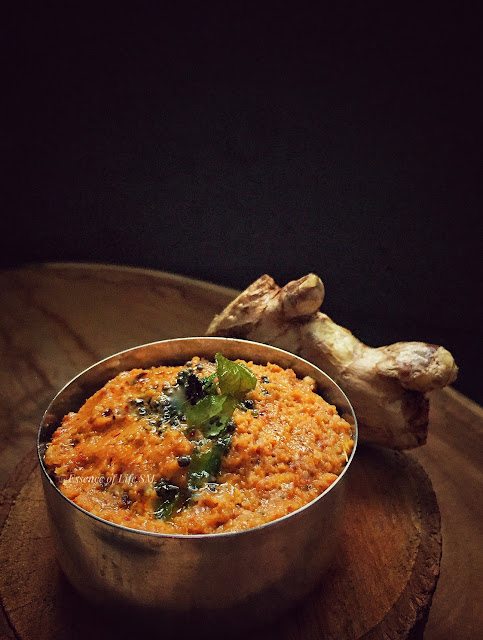 |
| HOMEMADE GINGER ALE RECIPE |
Ginger Ale - a totally refreshing and rejuvenating drink. A simple recipe which is surprisingly easy to make at home. Ginger Ale is nothing but a mixture of Ginger Syrup, Carbonated Water, Sweetener and with added flavours from Lemon/Orange. Within no time you can get hold of one of the most refreshing drinks - Sweet, spicy and slightly tart with a citrusy note.
Recently I have been fixing quite a number of Cocktails for my husband and the main reason was the Ginger Wine I brewed last year. Within a few days, a whole batch got over. I tried few Cocktails like Moscow Mule, Dragon Cocktail and few drinks like Ginger Ale, Honey & Lemon with Ginger Wine, Ice Tea, etc., I felt that Ginger Wine did total justice while I recreated it into Ginger Ale, as it gave a natural fizz with a kick. But as usual I was worried about the alcoholic content when it's "my drink", so when I brewed the next batch I brewed a batch for just 3 days and omitted Dry Red Chillies in it. This Ginger Ale Recipe here is a combination of Homemade Ginger Wine which yields a naturally fermented and fizzy Ginger Ale. For a total non-alcoholic fix, I have also added a recipe of Ginger Ale with homemade Ginger Syrup.
Ginger Ale is quite soothing and also it proves beneficial for digestive problems & ward of nausea. All the more Ginger has been used in traditional medications for thousands of years. Ayurveda and Traditional Chinese Medicine have been using Ginger for its immense therapeutical values.
Once the Ginger Syrup/Ginger Wine is ready, what you have do is just mix it up with Club Soda/Carbonated Water, Sweeten it up with Sugar/Honey and add a note of Lemon/Orange which gives a nice kick to the drink and above all serve it cold. This Ginger Wine/Ginger Syrup can be converted into Cocktails/Mocktails or simply add it to your Iced Tea, Watermelon Juice, Lemon Juice, Green Apple Juice, Grape Juice, etc., for an extra zing.
Recipe Type - Drink
Difficulty - Easy
Author - SM
For more JUICES, DRINKS & SMOOTHIES, Click here...
HOW TO MAKE GINGER SYRUP/GINGER WINE FOR GINGER ALE
 |
| HOMEMADE GINGER ALE RECIPE |
INGREDIENTS :
For Ginger Syrup :
Ginger - 2 Cups
Water - 4 Cups
Sugar - 1-11/2 Cups
Lemon Juice - of 2 Lemons.
METHOD :
How to make Ginger Syrup :
- Peel, clean and wash the Ginger.
- Gently crush the Ginger or coarsely grind it in a mixer/grinder/blender without water.
- Collect the crushed/ground ginger and mix it into the Water.
- Add Sugar and Lemon Juice to the above and mix well.
- Boil the Ginger Water mixture on a high flame for about 8-10 Minutes.
- Reduce the flame to medium-low and again boil it for another 5-10 Minutes.
- The mixture should have reduced to 3/4 of the total volume.
- Switch off the flame and allow the Ginger Syrup to cool down.
- Once cooled down, strain the Ginger Syrup.
- Store it in a clean & sterilized bottle in a refrigerator.
- Ginger Syrup stays good for about 5-7 days.
NOTES :
- Can substitute White Sugar with Brown Sugar or add an equal amount of White and Brown Sugar in Ginger Syrup.
- Brown Sugar gives an added colour to the Syrup.
- Can add herbs like Mint Leaves or Cinnamon/Clove to add an extra note of flavour in the syrup, but it is truly optional.
For Ginger Wine :
For a detailed recipe on GINGER WINE, Click here...
- Just brew it for 2-3 Days, if you are using it for making Ginger Ale.
- Can avoid adding Dry Red Chillies and Caramel while preparing the mix for Ginger Ale(which are preferred ingredients for Ginger Wine).
- Dry Chillies in the Ginger Wine add a spicy note to the drink it is added into.
- Caramel is added just to give colour and fullness to the Ginger Wine.
HOW TO MAKE GINGER ALE
 |
| HOMEMADE GINGER ALE RECIPE |
INGREDIENTS :
For Ginger Ale :
Ginger Syrup/Ginger Wine - 1/4 CupSoda/Carbonated Water - 1 Cup
Sugar/Honey - To Taste(Optional)
Lemon/Orange Juice
METHOD:
- Fill a tall Glass with Ice cubes.
- Pour 1/4 Cup of Ginger Syrup/Ginger Wine along with a Cup of Soda/Carbonated Water.
- Add your preferred sweetener and mix well.
- Add a dash of Lemon/Lime/Orange Juice and give a quick stir.
- Thoroughly mix the drink until fizzy.
- Serve Ginger Ale decorated with slivers of Ginger and a Lemon Slice.
NOTES :
- I have used Soda in this recipe.
- Can also use Carbonated Water or Sparkling Mineral Water while fixing Ginger Ale.
- I prefer adding unflavoured plain Soda for the recipe.
- Carbonated drinks like Sprite, 7Up, etc., makes the drink Sweeter.
- Add preferred Sweeteners to sweeten up the drink.
- Can totally avoid adding any sweeteners as the Ginger Syrup/Ginger Wine has sweetness in it.
- Can serve Ginger Ale with few Fresh Mint Leaves for a minty flavour.


























